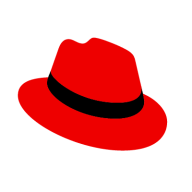

IBM Integration Bus and Red Hat Fuse compete in the enterprise integration platform category. IBM Integration Bus has an advantage in comprehensive feature offerings, whereas Red Hat Fuse is more flexible and cost-effective, appealing especially in cloud and container-based scenarios.
Features: IBM Integration Bus boasts extensive protocol support, robust connectivity options, and features like high availability, global transaction coordination, and API management support. It integrates well with IBM products and fits in SOA-compliant environments. Red Hat Fuse offers a lightweight architecture, integrates seamlessly with DevOps, and is based on Apache Camel, promoting flexibility in deployment and supporting both APIs and container-based solutions efficiently.
Room for Improvement: IBM Integration Bus is criticized for lacking orchestration support and having a monolithic architecture, complex licensing, and high costs. Users desire better cloud adaptability and improved integration with microservices. Red Hat Fuse faces challenges in UI development and container management, with noted documentation gaps and a steep learning curve. Enhanced monitoring tools and simplified deployment processes are needed.
Ease of Deployment and Customer Service: IBM Integration Bus offers robust deployment options but is associated with higher complexity when configured on-premises. Its customer service is strong but can be costly. Red Hat Fuse provides flexible cloud and on-premises deployment options and benefits from strong community resources. Its customer service is responsive, though certain technical issues may require prolonged resolution.
Pricing and ROI: IBM Integration Bus is seen as expensive with a complex licensing model, attractive mostly to enterprises weighing its comprehensive features against cost. However, users report good long-term ROI. Red Hat Fuse offers cost-effective, open-source solutions, ideal for budget-conscious enterprises. It delivers value through lower initial costs, although full enterprise support involves additional costs.
| Product | Market Share (%) |
|---|---|
| IBM Integration Bus | 19.4% |
| Red Hat Fuse | 6.9% |
| Other | 73.7% |


| Company Size | Count |
|---|---|
| Small Business | 15 |
| Midsize Enterprise | 17 |
| Large Enterprise | 47 |
| Company Size | Count |
|---|---|
| Small Business | 3 |
| Midsize Enterprise | 9 |
| Large Enterprise | 12 |
IBM Integration Bus is a market-leading software solution for application integration. It facilitates universal connectivity across enterprise systems, applications, and data, and offers a full range of integration capabilities on a flexible, secure, high-performance platform. You can use IBM Integration Bus to connect apps regardless of the communication formats or protocols they support. This connectivity enables interaction and data exchange among your varied applications in an adaptable, dynamic, and extensible infrastructure. IBM Integration Bus routes, transforms, and enriches messages from one location to another. It offers support for a wide range of functions, including routing, manipulating, filtering, enriching, monitoring, distribution, collection, correlation, and detection.
You can choose between IBM Integration Bus Advanced Edition, which is appropriate for a production setting, and IBM Integration Bus for Developers (Developer Edition), which is cost-free for development and testing purposes.
The interactions with IBM Integration Bus can be split into two categories:
IBM Integration Bus Benefits
There are many benefits to implementing IBM Integration Bus. Some of the biggest advantages the solution offers include:
Reviews from Real Users
IBM Integration Bus stands out among its competitors for a number of reasons. Two major ones are its robust data enrichment and its event correlation tool. PeerSpot users take note of the advantages of these features in their reviews:
Richard W., Chief Executive Officer at Responsiv, writes of the solution, “It reduces the need for programmers of consumer applications to understand where data is sourced, or how it is combined. It allows us to avoid the need for consumers to understand multiple API protocols and security arrangements, and in some circumstances can reduce the impact of systems being unavailable.
Another PeerSpot reviewer, an Integration Architect at a tech services company, notes, “One of the most valuable features is how seamless and easy to use this solution is. It's compatible with the cloud, it's a very seamless and fantastic tool.” He adds, “I rate this solution a nine out of ten.”
Red Hat JBoss Fuse is a lightweight, flexible integration platform that enables rapid integration across the extended enterprise - on-premise or in the cloud. JBoss Fuse includes modular integration capabilities, an enterprise service bus (ESB), to unlock information.
We monitor all Enterprise Service Bus (ESB) reviews to prevent fraudulent reviews and keep review quality high. We do not post reviews by company employees or direct competitors. We validate each review for authenticity via cross-reference with LinkedIn, and personal follow-up with the reviewer when necessary.